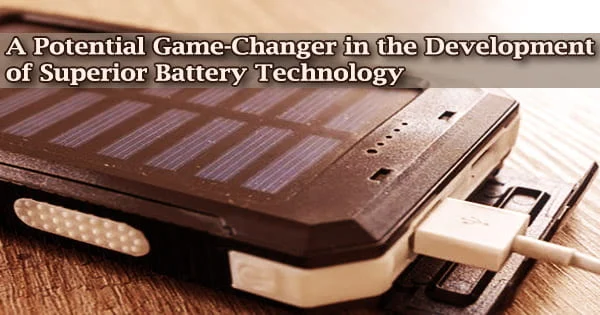Micro supercapacitors have the potential to change the way we utilize batteries by extending their lifespan and allowing for ultra-fast charging. As a result, manufacturers of everything from smartphones to electric cars are actively investing in electronic component research and development.
Researchers at Chalmers University of Technology in Sweden have now devised a technology that marks a significant advancement in the production of such supercapacitors.
“When discussing new technologies, it is easy to forget how important the manufacturing method is, so that they can actually be commercially produced and be impactful in society. Here, we have developed methods that can really work in production,” explains Agin Vyas, doctoral student at the Department of Microtechnology and Nanoscience at Chalmers University of Technology and lead author of the article.
Two electrical conductors are separated by an insulating layer in supercapacitors. They can store electrical energy and have a number of advantages over traditional batteries, including faster charging, more efficient energy distribution, and a longer lifespan without losing performance during the charge and discharge cycle.
When a supercapacitor is used in conjunction with a battery in an electrically driven device, the battery life can be increased by up to fourfold in commercial electric vehicles. And the benefits to the end-user, whether for personal electronic gadgets or industrial systems, might be enormous.
Our method is scalable and would involve reduced costs for the manufacturing process. It represents a great step forward in production technology and an important step towards the practical application of micro-supercapacitors in both everyday electronics and industrial applications.
Agin Vyas
“It would of course be very convenient to be able to quickly charge, for example, an electric car or not have to change or charge batteries as often as we currently do in our smartphones. But it would also represent a great environmental benefit and be much more sustainable, if batteries had a longer lifespan and did not need to be recycled in complicated processes,” says Agin Vyas.
Manufacturing is a big challenge
However, today’s supercapacitors are just too massive for many of the applications where they might be useful. They must be roughly the same size as the battery to which they are linked, which is a barrier to their use in mobile phones or electric vehicles.
As a result, a big part of today’s supercapacitor research and development is focused on making them significantly smaller. Agin Vyas has been working on developing micro-supercapacitors with his colleagues.
These are so small that they can fit on the system circuits that govern numerous operations in today’s mobile phones, computers, electric motors, and practically all other electronics. ‘System-on-a-chip’ is another name for this solution.
One of the most difficult issues is that the smallest units must be built in such a way that they are compatible with other components in a system circuit and can be easily customized for various applications.
The new study demonstrates a manufacturing process that integrates micro-supercapacitors with the most prevalent method of producing system circuits (known as CMOS).
“We used a method known as spin coating, a cornerstone technique in many manufacturing processes. This allows us to choose different electrode materials. We also use alkylamine chains in reduced graphene oxide, to show how that leads to a higher charging and storage capacity,” explains Agin Vyas.
“Our method is scalable and would involve reduced costs for the manufacturing process. It represents a great step forward in production technology and an important step towards the practical application of micro-supercapacitors in both everyday electronics and industrial applications.”
A method for generating micro-supercapacitors made of up to ten distinct materials in one unified manufacturing process has also been devised, allowing properties to be easily customized to suit a variety of end applications.





